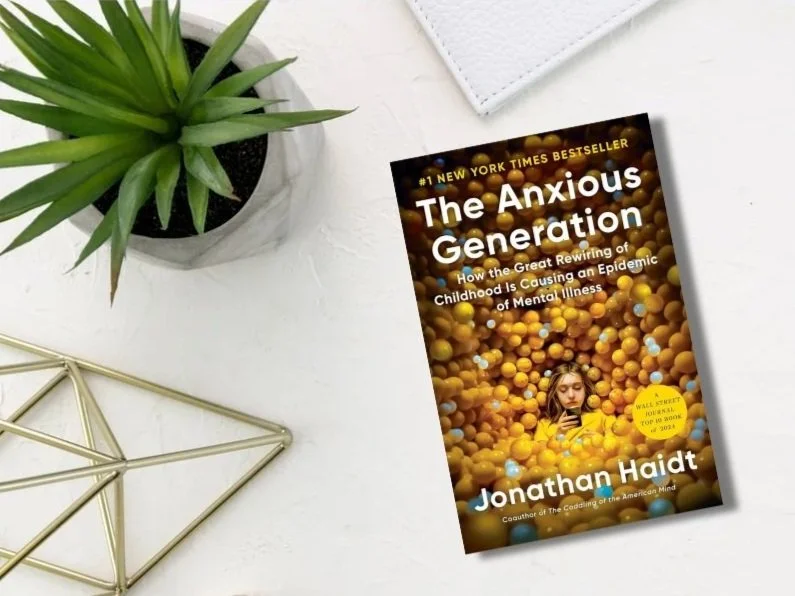Anxious Generation & The STEM Solution
Why Kids Need More Hovercrafts and Fewer Screens
The Crisis We’re All Scrolling Past
In case you missed it (probably because you were doom-scrolling), Jonathan Haidt’s book The Anxious Generation is making waves in the conversation about kids, social media, and mental health.
The TL;DR? Too much screen time is rewiring young minds — and not in a good way.
But while some experts are panicking, The Hovercraft Project is over here building solutions. Literally. With leaf blowers. And plywood.
If you’re worried about the future of kids who spend more time on TikTok than in real life problem-solving, keep reading. We’re about to break down why Haidt’s research matters and how STEM education — especially hands-on, teamwork-driven experiences like The Hovercraft Project — might just be the antidote to screen-induced anxiety.
1 - Screens Are Training Kids to Be Anxious — STEM Trains Them to Be Innovators
According to Haidt’s research, kids who grow up with constant screen exposure (especially social media) struggle with:
Higher anxiety and depression rates
Shorter attention spans
Fewer real-world social skills
Now, imagine throwing a group of these kids into The Hovercraft Project.
Instead of scrolling, they’re:
Problem-solving in real time
Getting hands-on with STEM concepts
Learning to fail, iterate, and succeed — without an “undo” button
And let’s be honest: Building a working hovercraft with your friends is a way bigger flex than getting 100K views on a dance challenge.
2 - Hands-On Learning Rebuilds Confidence in a Way Screens Never Will
Ever noticed how kids who play video games or scroll social media for hours get more anxious, not less?
That’s because they’re passive consumers, not active creators.
STEM flips the script.
When students build, test, and launch a working hovercraft, something magical happens:
They realize they’re capable.
They learn that failure isn’t the end — it’s the process.
They experience real-world problem-solving (which you can’t learn from a YouTube tutorial).
And this kind of confidence? It doesn’t vanish when the WiFi goes out.
3 - The Digital Age is Isolating — STEM Education is Social
If you’ve ever tried having a conversation with a teenager while they’re watching Reels, you know: Attention spans are in danger.
Haidt’s book explains how social media has hijacked human connection—leaving kids more isolated than ever.
Social media: Can create the illusion of socializing, while increasing loneliness
STEM teamwork: Forces kids to actually communicate, collaborate, and problem-solve together
At The Hovercraft Project, students work in teams to get their hovercrafts up and running.
They negotiate ideas (without emojis).
They face real-world challenges (not just the latest algorithm update).
They work together (and sometimes crash together—but that’s part of the fun).
In a world where kids are losing the ability to interact without a screen in between, STEM projects are a lifeline back to real human connection.
4 - The Best Education Happens Away from Screens
Yes, digital tools are amazing. But too much screen time? It’s crushing:
Creativity
Problem-solving skills
Hands-on learning experiences
The Hovercraft Project proves that when you take kids out of their digital bubble and give them real-world challenges, they thrive.
STEM education like this teaches:
Critical thinking (instead of just regurgitating Google answers)
Resilience (because a broken hovercraft means troubleshooting, not giving up)
Real-world skills (not just trending audio knowledge)
Want to give your kid (or your students) a STEM-powered, anxiety-busting, screen-free adventure?
Check out The Hovercraft Project and sign up to receive free resources!
Get the Book That Started the Conversation
Jonathan Haidt’s The Anxious Generation isn’t just another book — it’s a wake-up call.
If you’re wondering why kids are struggling in today’s world, and how we can help them rebuild confidence, focus, and real-world skills, this book is a must-read.
Get your copy of The Anxious Generation here! (Affiliate link)
And if you want to see STEM education in action—and how hands-on learning can counteract the effects of digital overload — follow The Hovercraft Project’s journey.
Because the best way to fight anxiety isn’t another app — it’s an adventure.

